INTRODUCTION
|
| In modern globalization, many technologies are trying to update a new development based on automation which works very rigidly, high effectively and within short period of time period. now the approach of this project is to develop smart machine which do the right think at right place at right time with right amount in process of farming. The main goal of this project is the development of the vehicle and the control unit, with possibility of using different sensor technologies. We want to test the vehicle and control unit and show that the robot is capable of following a path under field conditions. |
| Today the environmental impact of agricultural production is very much in focus and the demands to the industry is increasing. The production of agricultural products is growing and the competition is getting bigger, therefore the farmer has to be very efficient to be able to compete. At the same time the demands, for less use of pesticides and fertilizers, from the consumer and the legislation are increasing. Therefore the farmers have to use high technology in the fields for weeding, spraying, etc., earlier weeding were done manually but today it is neither profitable or possible to get a sufficient number of labor for this job. In this project, an autonomous agricultural vehicle, for test and development of sensors, tools and information technology in the field, is going to be developed. |
| The goal of decreasing herbicide usage has so far focused on reducing the herbicide dosage or replace chemical weed control by hoeing and harrowing. Environmental impact of agricultural production is very much in focus, while the competition demands high efficiency. Some years ago, weeding was done manually without the use of pesticides. With the development of an autonomous agricultural vehicle with sensors for weed detection, it will again be possible to avoid the use of pesticide The conventional weed control strategy is to apply the same dose rate of herbicide or the same intensity of physical treatments to the whole field. |
| To obtain efficient and accurate weed control systems they must be developed to target specific parts of the field. A field in which the crop is established in rows can be divided into three weeding target areas: (i) the area between the rows (inter-row area) (ii) the area between the crop seedlings within the rows (intra-row area), and (iii) the area close to and around the crop seedlings (close-to-crop area). Now a day the most challenging problem is still to remove weeds within the rows and close to crop plants. So far no commercial selective mechanical methods have been developed for the intra-row or close-to-crop areas, thus, 10 % to 20 % of a field has to be controlled by band spraying or manual weeding. The main obstacle for the progress of site specific weed control is the lack of automated detection and classification of crop and weed plants. Optical sensors are able to discriminate between plant species by analyzing images and / or multi-spectral information. These sensors and processing methods were developed intensively during the recent years. This result is still not acceptable for most of the weed control requirement. An important element within robotic weeding is the requirement to achieve highly accurate control especially in the close-to-crop area. Automatic controlled or autonomous vehicles are therefore essential for the implementation of robotic weeding. The vision of the ongoing research project is to contribute to the development of novel weeding technologies that can reduce manual efforts and herbicide. |
FARMING PROCEEELEMENTS OF THE ROBOTIC WEEDING SYSTEM
|
| The following descriptions are organized as work packages within the robotic weeding project. Different cooperation partners are responsible for achieving the specific package aims. |
| A. Seed Geo-referencing |
| A map of geo-referenced seeds can be created by integrating a highly accurate positioning system with seed detection sensors on each seeding unit of the machine. During the seeding operation, the positions of seeds dropped into the furrow are logged and stored in a computer memory. |
| B. Plant Recognition |
| The identification of the plant centre positions (ideally the position where the stems penetrate the soil) and the identification of the positions of plant leaves is an important prerequisite for the robotic weeding operations. To physically remove or treat the weeds with a minimum of crop damage it will be necessary to achieve accurate information about the locations of crop and weed plants. The system integration includes the definitions of the weed control parameters and the specifications of the technical framework. The focus target areas for the weeding system will be the intra-row and the closeto- crop area. By using automatic controlled platforms to carry out the weeding tasks, the well known and well developed inter-row hoeing can additionally be included to achieve a complete system for targeting all three areas i) inter-row, ii) intra-row and iii) close-to-crop area. The platform requirements for the weeding applications as for intra-row or close-tocrop weeding are different. Operations as seeding, intra-row tillage and mowing require tools of higher weights speed and power needs whereas individual plant treatments as picking and micro-spraying will be carried out at lower speeds and with lighter and smaller tools. The modules include interfaces to sensors, low-level and high-level controllers and more. , it has been possible to develop a real-time control system a vehicle suitable for research under field conditions has been developed. The vehicle has 4-WD, which makes it possible to test different steering strategies. The vehicle is specially designed for in-row driving; this has been achieved with the use of in-wheel motors. The vehicle can drive in row crops wit during the development of mechanics, electronics and software we have focused on making the vehicle flexible. The choice of technology for the various functions has big impact on functionality, flexibility and performance. During the development process we have had safety in the back of our minds and put an effort in eliminating or reducing the risks concerning an autonomous vehicle. |
| The robot can be divided into four main modules: |
| 1. A vehicle as a platform for carrying e.g. weeding tools for in row weeding. The vehicle could be equipped with the control modules described below. |
| 2. A control unit, with input from Vision, other necessary sensors is providing the vehicle and the tools with the necessary control signals. |
| 3. A vision system detecting the position of the crop relative to the vehicle position. |
| The development of the vision system is not a primary goal. Therefore, we want to make the vision system simple and it should just be able to recognize spots on the ground with good contrast to the ground. It should be possible to replace this simple module with more advanced modules for crop recognition in the field. |
METHODOLOGY
|
| In this project, it is presenting that the farm weed control process in advanced agriculture system which is controlled by microcontroller assembly. The technique of weed control based on row per column with fixed standard distance depending upon type of crop or type of cultivation. The other main part of this technique is sensor part. The sensor perform the well job of identifying weed present in between to crop lines as well as completion of farm and turn robotic vehicle to next row per column and follow remaining part of the farm. |
| The hardware structure to control the robotic weed control vehicle as advanced agriculture system is as shown in figure 1. The system includes one color sensors, two DC motor, two servo motor and whole parts are controlled by microcontroller assembly as designed in hardware. The operation of DC motor is based on simple electromagnetism, used to give energy to the wheels of vehicle. |
| Depending upon the revolution per minute of DC motor axel, it drives vehicle at particular distance, the weed cutting tool motor i.e. servo motor will be worked and controlled. |
| When DC motor would be started, vehicle moves along the particular columns between the two crop lines. The color sensor is connected to the front edge of robot; other is at left side for controlling the movement of vehicle. The process of weed control starts from sensing the color of the weed which is in front of robotic vehicle once the color is sensed by color sensor then the controller work as per the information given from color sensor and given instruction to the weed control tool which is present behind and that robotic vehicle, tool moves to down position. if color sensor do not |
| senses the color of the weed then that weed control tool is in up position and save the energy, means if there is weed present in between that two lines of crop then color sensors senses the color and then only weed cutting tool is in down position otherwise weed cutting tool is in up position. The mechanism of that process consists of one weed cutting tool. |
| The weed control tool is inserted vertically in the land at particular depth, corresponding IR sensor get interrupted and it sends signal to microcontroller through analog to digital converter. In case weed control tool is not inserted in land, microcontroller get understand. There are two cases to sense the sensor as- |
| Case I: weed is present: |
| If any weed is present color sensor gets triggered automatically and fetches such instruction towards microcontroller to turn the weed control tool in downward direction (as explained in section IV (B)if there is no any weed is present in between to lines of crop then again the color sensor fetches such instruction towards microcontroller to turn the weed control tool in upward direction processed it further. |
| Case II: Completion of crop firm: |
| If there is no any signal from both the side sensors then controller can understand that crop land is completed, it will moves up to last end of the column. At that position, it tries to move 270ÃÂ but cannot succeed and microcontroller understand to move next columns and in reverse direction. Now it again check for case (I) and move away further. And it repeatedly follows these two cases. When vehicle moves towards row per column, depending upon driver section of DC motor revolution, the servo motor terns shaft with up and down position mechanism which obeys the instruction of servo motor. The different distance is required for different weed cutting process, controlled by servo motor driver section. |
| Case III: Obstacle is present: |
| If any obstacle is present like hard rock in the way of vehicle, the infrared sensor gets triggered automatically and fetches such instruction towards microcontroller and stop the robotic vehicle and obstacle is removed by the inspecting person on again robotic vehicle is start further. |
ROBOTIC SYSTEM
|
| A robot is a mechanical and artificial agent. It is usually an electromechanical system, conveys a sense that it has agency of its own. It is a device that automatically complicated task, because of software programming. |
| 1. Design of robotic vehicle: |
| In this project, for developing the structure of robotic agriculture machine, simple technique is used. As shown on figure 2, it shows the designing of vehicle. |
| It has four wheels which are individually driven and steered. These wheels drive respectively with two dc motor, provides direct drive without gearing. Also there are two sliding bearings, respectively connect to the front wheel and body, so that the front wheel can rotate between +450 or -450 around bearing. All dc motors are energized by dc supply through microcontroller circuit. Color sensor sets at the front edge of vehicle for sensing color of the weed in the way of vehicle, provides instruction to microcontroller for controlling motion of weed cutting tool through a servo motor. The weed control tool is fitted at back side of assembly, shown in figure 2. It is used to cut the weed present between two columns of the crop controlled by servo motor. At weed cutting section, a servo motor and an infrared sensor is used to put the weed control tool in ground and check whether the tool is placed in ground or not by infrared sensor. If any error is detected in this process like weed cutting tool is not dropped in land, battery backup problem etc., then it stars buzzer and shows the fault on display board. |
| 2. Path controlling: |
| In agriculture environment heavy or loaded vehicle can’t move easily on the bumpy road, so small vehicle is designed, operates on dc motor, in this project. For controlling path of vehicle, it should be predefined as shown in figure 3. Previously, the vehicle drives in straight line to first column and after end of ploughed land, the vehicle rotate 1800 and select second column and proceed further. to maintain the robotic vehicle position in between the two lines of crop there are two sensors that are senses the distance between the crop line and the edge of robot if the distance towards one of the side is decreases then distance towards the other side increases then the vehicle slightly moves towards the distance increasing side up to maintain the near about same distance towards both the side and then robot move in forward direction .To determine instantaneous values of all motors, the analysis of rigid body velocity is used. During the translational motion the longitudinal direction of all front two wheels are oriented identically with respect to vehicle body and both wheels spin at And during rotational motion longitudinal axis of each wheel is oriented at +450 or -450 with respect to orientation of vehicle body. |
| The MATLAB is used for controlling, modeling and analysis of DC motor with the help of two conditions as feed forward and feedback system. |
| The equation of transfer function for controlling of DC motor is obtained by using block diagram representation as shown in figure 4. The control inputs for the steering and driving motors are computed using feedback control system laws as |
 |
| Where, |
| Gv (s) -closed loop gain |
| w (s) - angular velocity |
| V (s) - input voltage |
ALGORITHM IMPLEMENTATION
|
| The algorithm for operating the robotic agriculture vehicle and whole system is implemented as |
| 1. Start the machine. |
| 2. Select the vertical distance in meter. |
| 3. Display the distance between two crop lines and robot on LCD display board. |
| 4. Check the whether the color sensor is on or off. |
| 5. If it is off, buzzer will on and DC motor will off. If it is on, start the DC motor. |
| 6. Vehicle starts to move in forward direction according to distance between crop lines. |
| 7. While processing it, if the distance one of the side decreases than other side then move the robot towards other side slightly and maintain the distance between crop line and robot towards both sides of the robot. Microcontroller gives instruction to vehicle, goes straight way. |
| 8. If the color sensor senses the color of weed present between the crop lines after completion of ploughed line, the vehicle moves back by rotating 1800 towards right side. Again it will go to step no. 8 up to end of ploughed land. |
EXPERIMENTAL RESULTS
|
| A series of automated robot guidance tests in rowed ground nuts, jawar, wheat etc were conducted to validate the performance of the developed steering-based automated system. Ten rows of above crop were planted using a one-row planter in similar pattern. We tested following results as |
1. Speed of vehicle depending upon moisture:
|
| The speed of vehicle is only depends upon moisture level of soil. We have taken different results to the speed of vehicle as shown in figure 5. The red column shows the standard level of moisture for those seeds. The red column defines the good performance with characteristics as explained bellow. |
2. Speed torque characteristics of DC motor:
|
| The D.C. motor is operated on 12V with 60 rpm. The graph shows torque speed characteristics of D.C. motor to full load. It is obtained by increasing armature voltage from 1V to 12V linearly. It is plotted in figure 6. |
3. D.C. motor speed analysis with and without feedback :
|
| The graph shows two techniques for reducing sensitivity of angular velocity (ω) to load variation i.e. change in torque opposed by the motor load. The plot compares the closed loop bode diagram with its simulation when back e.m.f. constant (Eb=0.085). The simulation of feed forward and feedback is represented as shown in figure 7. |
4. Green color intensity sensor:
|
| The output of green color sensor is obtained by considering different shades and its intensity as shown in figure 8, which shows as percentage of green color increases out of sensor is also vary accordingly. |
| The following table clears that, different values are shown on LCD display. |
5. Current and battery discharge time with and no load.
|
| Table 2 shows Current consumed by DC motor and Microcontroller, servo motor, color sensor, IR sensor and from that we can calculate the discharging time for battery with load and without load. Formula to calculate to time for no load is |
| Discharge Time = mAH current of battery / Total current consumed by circuit in mA. |
FUTURE IMPLEMENTATION
|
| The system can be advanced for checking the moisture of farming land by moisture sensor and adjust the particular amount of water in soil (i.e. moisture of soil) according to seed and its requirement. It can automatically increase the moisture of soil in land, when providing water supply to this system. The system can further be modified to measuring various parameter in farming like crop growth, weed prevalence, its type etc. Also, one or many system can be monitored through GSM system. |
CONCLUSION
|
| The paper has presented that the requirements and progress made towards achieving a future precision autonomous farming system. The assembly is developed for weed control system in ploughed land automatically i.e. no man power required. The project has consists of two different mechanism. The first mechanism contains making an assembly of vehicle and its motion, where as second mechanism is cutting the weed in between to crop lines. The microcontroller is used to control and monitoring the process of system motion of vehicle. It is controlled with help of DC motor and servo motor. This system also detect obstacle present in path of the vehicle by infrared sensor. It is also used for sensing turning position of vehicle at the end of land. Because of no man power requirement and high speed of operation, it has scope for further expansion. |
| |
Tables at a glance
|
 |
 |
| Table 1 |
Table 2 |
|
| |
Figures at a glance
|
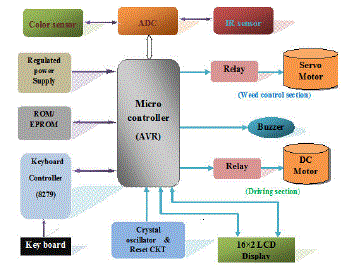 |
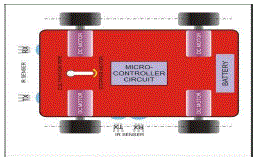 |
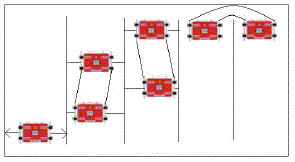 |
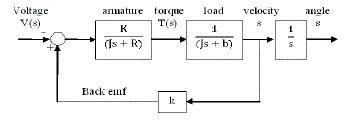 |
| Figure 1 |
Figure 2 |
Figure 3 |
Figure 4 |
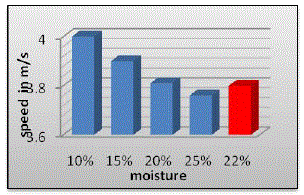 |
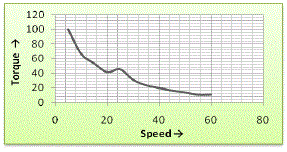 |
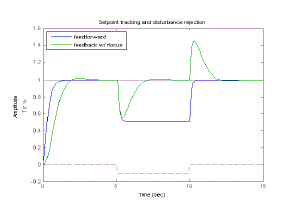 |
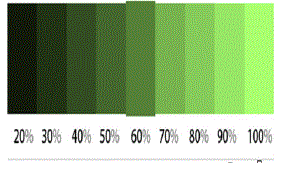 |
| Figure 5 |
Figure 6 |
Figure 7 |
Figure 8 |
|
| |
References
|
- “Robotic agriculture –The future of agriculture mechanism”, Agro Technology, the royal veterinary andagriculture university.2005.
- H. Pota, R. Eaton, J. Katupitiya, S.D. Pathirana, “Agricultural robotics: A streamlined approach to realization of autonomous farming”, Second international conference onindustrial and information system, IEEE.2007.
- R. Eaton, R. Eaton, J. Katupitiya, S.D. Pathirana, “Autonomous farming: Modeling and control of agricultural machinery in a unified framework”, 15th internationalconference on mechatronics and machine vision in practice, New Zealand.2008.
- Chengliang Liu, Mingjun Wang, and Jun Zhou, “Coordinating control for an agricultural vehicle with individual wheel speeds and steering angles”, IEEE control systemsmagazine.2008.
|